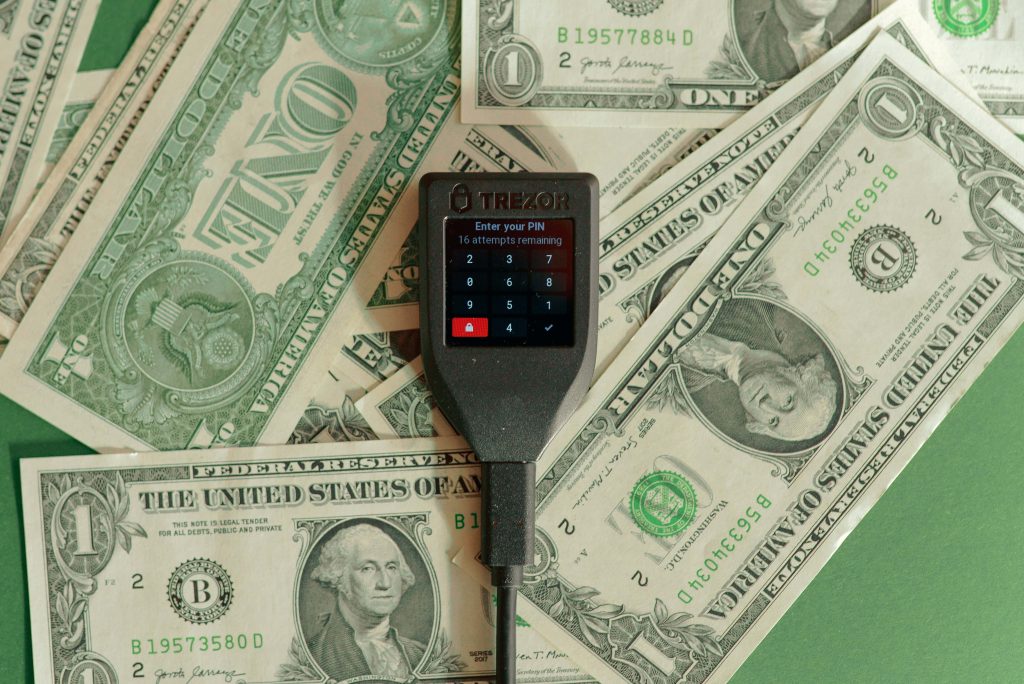
07 Sep Choosing the Best Cryptocurrency Wallets: What You Need to Know
Introduction
Cryptocurrency wallets are essential tools for managing digital assets. They allow users to store, send, and receive cryptocurrencies securely. Unlike traditional wallets that hold physical money, cryptocurrency wallets store private keys—secure digital codes known only to the user and used to access their crypto holdings. These wallets come in various forms, each offering different levels of security, convenience, and control. Understanding the different types of cryptocurrency wallets can help users make informed decisions about managing their digital assets.
Custodial vs. Non-Custodial Wallets
Custodial Wallets
Custodial wallets are managed by third parties, such as cryptocurrency exchanges or wallet service providers. In these wallets, the service provider holds and manages the private keys on behalf of the user. This means the user trusts the provider to secure their funds.
Advantages:
- User-friendly and easy to set up.
- Often integrated with exchange services, enabling seamless trading.
- Providers often offer customer support and recovery options in case of lost access.
Disadvantages:
- Users do not have full control over their funds.
- The funds are only as secure as the service provider’s security measures.
- Higher risk of hacks and regulatory issues affecting the service provider.
Non-Custodial Wallets
Non-custodial wallets give users full control over their private keys. Users manage their own security and are responsible for protecting their keys from loss or theft. This type of wallet offers greater autonomy and security compared to custodial wallets.
Advantages:
- Full control over private keys and funds.
- Enhanced security and privacy.
- Independence from third-party service providers.
Disadvantages:
- Higher responsibility for securing private keys.
- If private keys are lost or stolen, funds are irrecoverable.
- Generally more complex to set up and use.
Key Differences
The main difference between custodial and non-custodial wallets is control over private keys. Custodial wallets are user-friendly and convenient but involve trusting a third party with security. Non-custodial wallets offer more security and control but require users to take full responsibility for safeguarding their private keys.
Hot vs. Cold Wallets
Hot Wallets
Hot wallets are connected to the internet, making them more accessible for daily transactions. They include mobile wallets, desktop wallets, and web wallets. While convenient, hot wallets are more vulnerable to online attacks and hacking attempts.
Examples:
- Mobile Wallets: Trust Wallet, Coinbase Wallet.
- Desktop Wallets: Exodus, Electrum.
- Web Wallets: MetaMask, MyEtherWallet.
Security Tips:
- Use strong, unique passwords.
- Enable two-factor authentication.
- Regularly update wallet software.
- Be cautious of phishing attempts and malicious websites.
Cold Wallets
Cold wallets are offline storage solutions, providing enhanced security. Examples include hardware wallets and paper wallets. Since they are not connected to the internet, they are less susceptible to cyber threats, making them ideal for long-term storage of large amounts of cryptocurrency.
Examples:
- Hardware Wallets: Ledger Nano S, Trezor.
- Paper Wallets: Generated using services like bitaddress.org.
Security Tips:
- Store hardware wallets in a safe place.
- Keep paper wallets in waterproof and fireproof containers.
- Ensure the secure generation of keys (preferably offline).
Key Difference
The primary difference between hot and cold wallets is internet connectivity. Hot wallets are always online, offering convenience for frequent transactions, whereas cold wallets remain offline, providing superior security for long-term storage.
Types of Cryptocurrency Wallets by Storage
Software Wallets
Software wallets are digital applications installed on devices like smartphones and computers. They include mobile wallets, desktop wallets, and web wallets.
Mobile Wallets:
- Functionality: Mobile wallets are apps installed on smartphones, providing convenience and accessibility for daily transactions. They allow users to scan QR codes for payments and easily manage their crypto on the go.
- Security: Use app-specific security features like biometric authentication (fingerprint or face recognition) and ensure the device itself is secure.
- Examples: Trust Wallet, Coinbase Wallet.
Desktop Wallets:
- Functionality: Desktop wallets are software applications installed on a computer, offering more security than mobile wallets but less convenience for on-the-go use. They typically provide more advanced features and integrations.
- Security: Use strong passwords, encrypt the wallet, and regularly back up the wallet data.
- Examples: Exodus, Electrum.
Web Wallets:
- Functionality: Web wallets are accessed through internet browsers, offering high convenience but the least security among software wallets due to their constant internet connection.
- Security: Ensure the use of secure HTTPS connections and be cautious of phishing sites.
- Examples: MetaMask, MyEtherWallet.
Security Considerations: While software wallets are convenient, they are vulnerable to malware, phishing attacks, and hacking. Users should employ strong passwords, enable two-factor authentication, and regularly update their software to enhance security.
Hardware Wallets
Hardware wallets are physical devices designed to store private keys offline. They are considered one of the safest options for storing cryptocurrencies.
- Functionality: Hardware wallets, like Ledger Nano S and Trezor, connect to a computer or mobile device only when necessary to perform transactions. They require users to confirm transactions physically on the device, adding an extra layer of security.
- Security Benefits: Since hardware wallets are offline most of the time, they are highly resistant to hacking attempts and malware. They are ideal for storing large amounts of cryptocurrency for long periods of time. Additionally, hardware wallets often come with recovery seed phrases that allow users to restore their wallets if the device is lost or damaged.
- Examples: Ledger Nano S, Trezor.
Paper Wallets
Paper wallets involve printing out the private and public keys on a piece of paper. They are a form of cold storage, but they come with significant security risks.
- Functionality: Users generate a paper wallet using a secure, offline method and print the keys. These wallets are entirely offline, preventing any form of cyberattack. Paper wallets can be used to store cryptocurrency by transferring funds to the public address printed on the paper.
- Security Risks: Despite their offline nature, paper wallets are susceptible to physical damage, loss, and theft. Proper handling and storage are crucial to maintaining their security. Additionally, creating a paper wallet securely requires using a trusted generator offline and ensuring the printout is not accessible to others.
- Examples: Generated using services like bitaddress.org.
Conclusion
Cryptocurrency wallets come in various forms, each with unique advantages and security considerations. From custodial to non-custodial, hot to cold, and software to hardware wallets, the choice depends on individual needs and security preferences. Custodial wallets offer convenience but at the cost of control, while non-custodial wallets provide greater security and independence. Hot wallets are ideal for frequent transactions, whereas cold wallets are best suited for long-term storage. Choosing the right wallet involves balancing convenience and security to protect your digital assets effectively.
Key Takeaways
Purpose | Manages digital assets by storing private keys. |
Custodial vs. Non-Custodial | Custodial: Third-party managed, user-friendly, exchange integrated. Non-Custodial: User-controlled, more secure and private, higher responsibility. |
Hot vs. Cold Wallets | Hot Wallets: Online (Mobile, Desktop, Web), convenient but vulnerable. Cold Wallets: Offline (Hardware, Paper), highly secure for long-term storage. |
Storage Types | Software Wallets:
Hardware Wallets: Offline devices (e.g., Ledger, Trezor). Paper Wallets: Printed keys, secure offline but prone to damage. |
Security Tips | Use strong passwords, enable two-factor authentication, and update software regularly. Securely store hardware and paper wallets. |
Conclusion | Choose based on security needs and transaction frequency. Custodial for ease, non-custodial for control. Hot for frequent use, cold for secure storage. |
Frequently Asked Questions
What is the main difference between custodial and non-custodial wallets?
Custodial wallets are managed by third parties, such as exchanges, which hold and manage the private keys on behalf of users, offering convenience and customer support but less control and security. Non-custodial wallets give users full control over their private keys, enhancing security and privacy but requiring users to manage their own security.
How do hot wallets differ from cold wallets?
Hot wallets are connected to the internet, making them convenient for daily transactions but more vulnerable to cyberattacks. Examples include mobile, desktop, and web wallets. Cold wallets, such as hardware and paper wallets, are offline, providing superior security for long-term storage as they are less susceptible to online threats.
What are the security considerations for software wallets versus hardware wallets?
Software wallets, while user-friendly, are prone to malware, phishing, and hacking. Users should use strong passwords, enable two-factor authentication, and keep software updated. Hardware wallets, on the other hand, store keys offline, making them highly secure against cyber threats. They also typically include recovery seed phrases for wallet restoration.
Uncover how Web3 technologies can boost security, transparency, and efficiency in your enterprise. Find out how they can drive innovation and give you a competitive edge.




